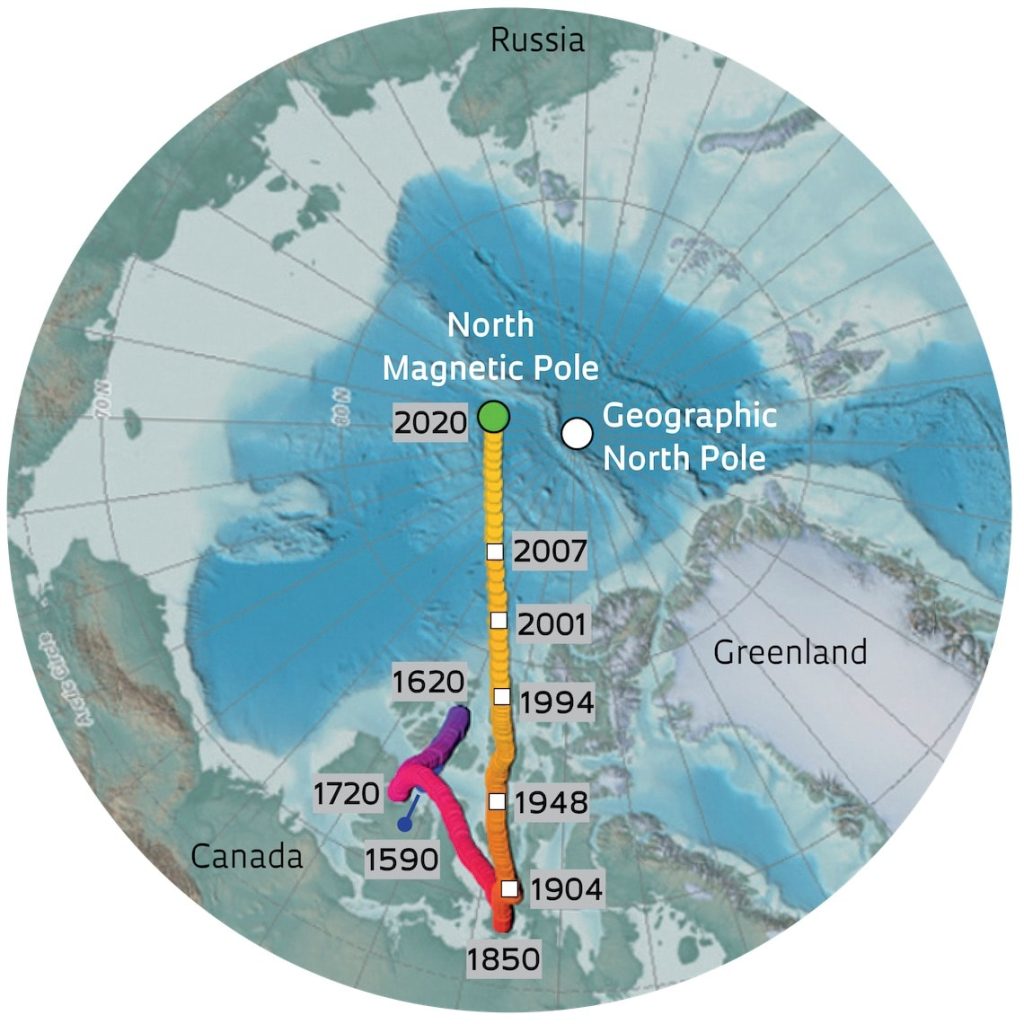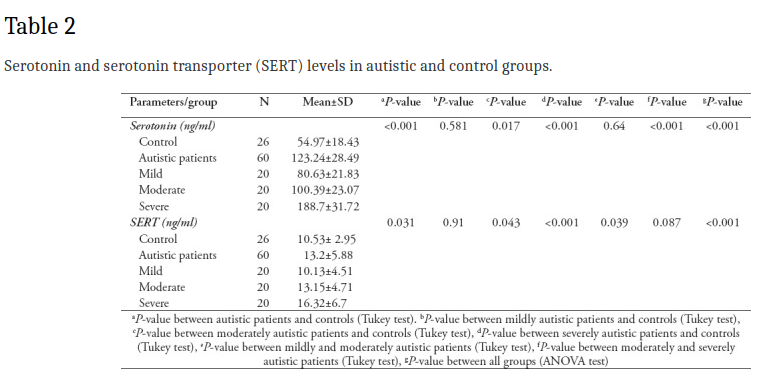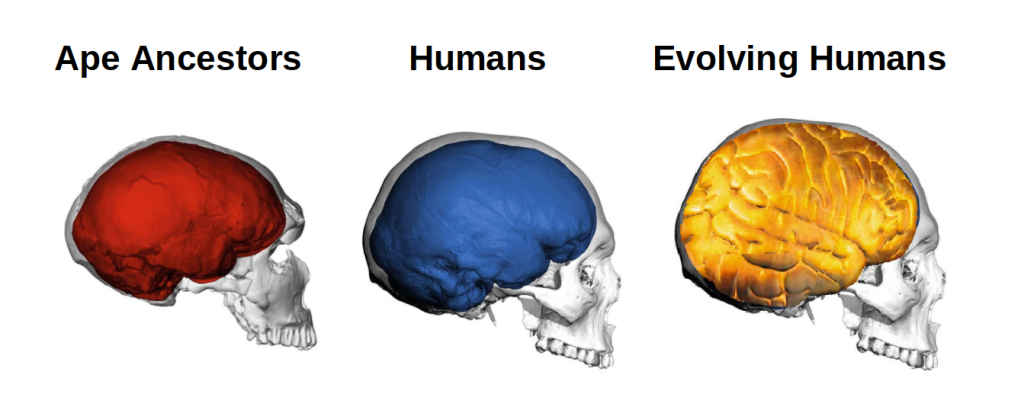In the written piece “Endohuasca-Pole Shift Theory” and the video presentation “The Stoned Ape Meets DMT” (Part 1) we outlined the evidence indicating that the earth’s pole shifts throughout history could have played a significant role in human evolutionary processes. This is based upon the notion that earth’s magnetic field fluctuates significantly during the movement of the magnetic north pole. This subsequently induces changes in ultraviolet-B ray penetration to the earth’s surface coinciding with biochemical fluctuations, changes in electrophysiology, and subsequent evolutionary changes.
We propose the notion that instead of psilocybin mushrooms being the predominant catalyst for evolutionary leaps, it was stimulation of endogenous DMT, 5-MEO, Bufotenin, and endogenous monoamine oxidase inhibitor (tribulin, neurocatin, pinoline, harmine) upregulation that provided the psychedelic soup to drive brain growth. This interaction with the earth’s magnetic field fluctuation and internal biochemical changes is proposed to have taken place somewhere between 2 million and 40,000 years ago.
The question that now arises is… when might the next evolutionary leap take place?
Since we proposed that the magnetic north pole movement and the coinciding geomagnetic fluctuations as potential driving forces of evolution, it would seem pertinent to cite that since 1860, magnetic north pole has been documented to have traveled roughly 1,500 miles. This indicates an average of about 9 miles per year. However, in recent times, it’s been estimated that magnetic north has been moving anywhere from 30 miles per year to as much as 50 miles per year. In 2014, researchers at the European Space Agency (ESA) cited that they had uncovered data indicating that earth’s magnetic field was weakening at a rate 10 times faster than originally predicted. Previously, researchers estimated that earth’s magnetic field was weakening 5 percent per century but the new data indicates that it is actually weakening at 5 percent per decade. This accelerated change in earth’s magnetic field can definitively induce an effect on mammalian neurology being that the geomagnetic field fluctuations take place within the microtesla and nanotesla range. As cited in Part 1, there are multiple lines of evidence indicating that the human brain and nervous system can be affected by the much weaker picotesla range stimulation (1 microtesla = 1,000,000 picotesla). In addition, being that the earth’s magnetic field serves as a protective barrier to solar particles and ultraviolet radiation, the weakening of this field drives increased UV-B ray penetration to earth’s surface via a depleted ozone layer. In Part 1, we sourced multiple research inquiries citing the physiological changes induced by UV-B ray exposure in both plants and animals (including DMT’s specific affinity for the UV-B spectrum).
Based on the significant changes in magnetic north pole movements and subsequent changes to the earth’s magnetic field taking place currently, there lies the possibility that humanity is undergoing an accelerated evolutionary process right now.
The question is whether there is any evidence today to support this hypothesis…

In 2022, a paper published in Science cited that based on analysis of genetic variation in 19 different wild animal groups throughout the world, evolution is occurring 4 times faster than originally thought. This study looked at animals on different continents as well as different species ranging from superb fairy-wrens in Australia to spotted hyenas in Tanzania to song sparrows in Canada and red deer in Scotland. According to the researchers, it is the first time that the speed of evolution has been assessed on such a large, global scale. The average length of the study took place over 30 years.
In 2016, researchers from Cornell University published a paper in the journal Genome Research citing the finding that primate evolution can occur at a much faster rate than previously believed. Whether this is an emergence of current evolutionary processes or a technological advance in terms of measurement is unclear.
In 2019, it was observed for the first time that a specific breed of pig (Visayan Warty pig) was capable of utilizing tools to help them dig and build nests. This ability had never previously been seen in pigs and could indicate that an evolutionary change is taking place currently. Also in 2019, it was observed that a species of reef shark known as the leopard epaulette shark evolved the ability to walk on land in a quick time frame. A recent 2023 study published in the journal Evolution measured the brain sizes of 159 different dog breeds and found that breeds that were more distantly related to wolves had unexpectedly experienced a significant growth in brain size over the past 150 years.
It seems as if there are a few lines of evidence indicating that an acceleration of global animal evolution could be taking place currently.

What about plants?
In 2016, a study published in the journal Molecular Ecology observed that rapid, genome-wide evolution took place in a species of plant named Brassica rapa following recent drought conditions. A 2007 study published in the Proceedings of the National Academy of Sciences found that there was a rapid evolution of flowering time in response to change in climate. In 2016, an article in the journal Science outlined that rapid plant evolution plays a key role in its ability to spread across fragmented landscapes.
Based on the fact that current fluctuations in earth’s magnetic field coinciding synchronously with increased UV-B radiation penetration, the evolutionary effects are likely to manifest in the vast majority if not all organisms on the planet. Therefore if evolutionary leaps are hypothesized to be taking place in humans currently, there should be evidence of this taking place in other animal and plant species during this time. Based on the sources cited above it appears that there could be an evolutionary surge taking place although it is difficult to pin-point based on the limited time scale of measurement and ongoing improvements in technological development and analysis.
The question that now arises is… Is there any evidence to indicate that the human species is currently undergoing any significant evolutionary changes?
Once again, this is a difficult data point to parse out as evolutionary changes in humans could be manifesting in slightly different manners based on environment. A country or culture immersed in digital technology in metropolitan areas could react quite differently physiologically compared to a culture immersed in undeveloped habitats shielded from digital influence.
One emerging behavioral diagnosis that has been increasing in rapid fashion is that of autism. A 2022 review in the journal Autism Research outlines the fact that autism is being diagnosed globally across the world at an increasing rate compared to decades past. Unfortunately, the diagnosis of autism rarely coincides with objectively measured quantification of a subject’s brain via MRI, PET, or even EEG. Therefore there lies the possibility that different subjects diagnosed as “autistic” can have very different neurology and functionality as well. The formal definition of autism is “a neurological and developmental disorder that affects how people interact with others, communicate, learn, and behave.”
Some researchers believe that autistic individuals possibly exude increased levels of endogenous DMT synthesis coinciding with their changes in behavior. A 2019 review paper in Frontiers in Endocrinology discusses the potential link between increased endogenous DMT production and the neurological abnormalities associated with autism. As cited in Part 1, while DMT is most famously known as an endogenously produced psychedelic compound, 5-MEO-DMT and bufotenin (5-OH-DMT) are also endogenous. 5-MEO-DMT aka “The God Molecule” is known as the most powerful psychedelic in the world. While the effects of bufotenin are less well publicized than that of DMT & 5-MEO, a 2001 field study published in the Journal of Psychoactive Drugs reported that vaporized bufotenin is psychoactively equally potent to vaporized 5-MEO-DMT.
A 1972 study published in the Journal of Autism and Childhood Schizophrenia measured the levels of DMT, 5-MEO-DMT, and bufotenin in the urine of 12 children (6 controls, 6 diagnosed with infantile autism). The researchers found that none of the subjects exuded measurable levels of DMT & 5-MEO-DMT in their urine. However, bufotenin was measured in 5 of the 6 children with autism while none of 6 control subjects had measurable bufotenin.
A 2010 study published in the journal Neuro Endocrinology Letters measured the levels of urine bufotenin in 15 young adults with autism compared to 18 control subjects. The researchers found that the autism group exuded 3.30 +/- 0.49 microg/L while the control group exuded 1.53 +/- 0.30 microg/L indicating that autistic young adults exude roughly 200% greater levels of bufotenin in their urine.
The shamanic brew ayahuasca includes the banisteriopsis caapi plant containing monoamine oxidase A (MAO-A) inhibitory properties in order to suppress the degradation of DMT following oral ingestion. Monoamine oxidase-A is an enzyme responsible for the breakdown of monoamine neurotransmitters such as serotonin, dopamine, and norepinephrine. A 2017 study in the Journal of Neuroscience research found that MAO-A activity in patients with autism (ages 4 to 38) were significantly lower (20.6%) compared to age matched controls. A 2018 study in the Saudi Medical Journal compared the levels of serotonin and serotonin transporters (SERT) of 60 autistic children compared to 26 control children (ages 3 to 13). The researchers found that blood levels of serotonin in autistic children averaged 123.24 compared to the control children of 54.97. SERT levels of autistic children averaged 13.2 while the control children averaged 10.53.

While some aspects of the “Stoned Ape Theory” of evolution posits that psilocybin mushrooms drove increases in brain size development changes via its properties of inducing neurogenesis and neuroplasticity, there is evidence suggesting that autistic children experience these aspects without any exogenous catalysts. A 2011 study published in JAMA observed that children with autism had 67% more neurons in their prefrontal cortex compared to non-autistic children. The researchers also found that the brain weight of autistic children was 17.6% greater than that of non-autistic children. A 2017 study published in the journal Research in Autism Spectrum Disorders observed that subjects with autism exuded greater synaptic plasticity than non-autistic subjects.
A 2023 study published in the journal Science observed that intracellular 5-HT2A receptors were responsible for plasticity-promoting properties and that serotonin was an unlikely neurotransmitter responsible for these effects. Being that bufotenin (5-OH-DMT) synthesis is the result of serotonin methylation via indole-n-methyltransferase (INMT), the increased serotonin levels in autistic children could be viewed as an upstream catalyst to increased bufotenin levels. Based on the 2023 Science study, it seems possible that bufotenin is the intracellular 5-HT2A receptor agonist that is responsible for the hyperplasticity and increased neurogenesis aspects of those with autism.
While autism is generally viewed as a neurological & development disorder, there are some examples of enhanced function from subjects diagnosed as autistic. In some cases, these enhanced functions are so pronounced that the person is labeled as an “autistic savant”. The formal definition of a savant is a person who exhibits exceptional skill or brilliance in some specific field such as math or art.
An example of someone who has been labeled as an autistic savant is a man named Kodi Lee. Kodi was born with optic nerve hypoplasia causing him to be blind as well as being diagnosed as autistic at an early age. He also has been labeled as a musical savant who went on to be declared the winner of season 14 of the television show “America’s Got Talent”.
There is also the extraordinary case of Flo and Kay Lyman. These women are the world’s only female autistic savant twins. Both Flo and Kay were diagnosed as autistic at an early age in the 1960s. However, it wasn’t until 1996 that the world became aware of their special abilities related to memory. They had the ability to name the day of the week for any date, past or future known as calendrical savantism. They also had autobiographical memories in which they could recall what they had for breakfast, what they wore, and the weather for any given day. This ability led them to be nicknamed the “Rainman Twins” based on similar abilities exuded by a man named Kim Peek who the movie “Rainman” was based on.
Stephen Wiltshire is a man known for his ability to draw intricate landscapes from memory after seeing them only once. Stephen is considered to be an autistic savant and an architectural artist. In 2006, he was made a Member of the order of the British Empire (MBE) based on his services to art and also opened up a permanent gallery on the Royal Opera Arcade in London.

There is also the case of Elon Musk who has been cited to be autistic while managing to develop multiple businesses and amass a large sum of wealth in the process. One of the foremost researchers regarding autism and savants was a psychiatrist known as Dr. Darold A. Treffert (1933-2020). Dr. Treffert would develop the Treffert Center which is a state-of-the art medical facility dedicated to researching the potential of the human mind, autism, and focusing on strengths rather than limitations. He would author best selling books titled, “Extraordinary People: Understanding Savant Syndrome” and “Islands of Genius: The Bountiful Mind of the Autistic, Acquired, and Sudden Savant”. Through decades of research, Dr. Treffert would observe that as many as one in ten persons with autism would exude savant-like abilities of various kinds. While not entirely pertinent to this piece, Dr. Treffert’s research in subjects who have experienced acquired savant syndrome following traumatic brain injury is an extremely intriguing field of study.
Another researcher and medical doctor named Dianne Hennacy Powell has researched even more extraordinary abilities of savants outlined in her research paper titled, “Autistics, Savants, & PSI: A Radical Theory of Mind”. She documents the fact that her observations indicate that a subset of autistic individuals exude capabilities that fall outside of the traditional accepted senses by mainstream neuroscience.
What’s interesting is that many subjects who have experienced Ayahuasca, DMT, 5-MEO-DMT, and other psychedelics become open to the possibility of concepts such as PSI. PSI stands for extrasensory perception and experiences believed to be unexplained by any known physical or biological mechanism. The psychedelic experience appears to offer a glimpse into the human potential and many report unexplainable phenomena following these experiences while in a sober state.
???

Back to human evolution…
Could it be possible that this significant uptick in the diagnosis of autism and the subsequent savant capabilities is an indicator of accelerated evolutionary processes? We know from the data that subjects with autism have increased bufotenin (5-OH-DMT) circulating in their systems. We know that these subjects exude greater neurogenesis, hyperplasticity, and increased brain volume compared to their non-autistic counterparts. We know that a high percentage of subjects with autism exude abilities that could be considered extraordinary. While we understand that the topic of autism is controversial regarding the underlying source of the condition, as we cited above, autism is not objectively diagnosed via neuroimaging meaning that there could be very large discrepancies across subjects with this diagnosis. There is evidence indicating that prenatal factors can lead to the autism diagnosis while others appear to develop the condition after their birth during their childhood years. There could very well be environmental factors that induce neurological damage to a percentage of subjects with this condition.
Nevertheless there is a decent amount of evidence indicating that numerous animal species and plant species are currently experiencing accelerated evolution of sorts. However, being that animals, plants, and humans do not all adapt at the same speed or efficiency, there could be a subset of each species that experiences physiological damage while others thrive. Evolution does not seem to be a smooth or linear process.
It truly is the “survival of the most adaptable” with the ever changing environmental conditions.
While there has been great fervor in recent times in regards to the integration of artificial intelligence and digital intertwining with human neurology as a manner to “accelerate” our species, it seems extremely premature to make such postulations. Without comprehending the mechanisms of autistic savants, acquired savant syndrome, or even how memories are accessed or formed, the merging of humans with digital technology could actually hamper the human potential rather than foster it. There lies the possibility that humanity (as well as virtually all organisms on earth) is undergoing an intense trans-formative process which is ushering in a more evolved version of ourselves. With the recent findings of the shifting of earth’s rotational axis (no, it’s not caused by water pumping), it seems that there is no slowing down of the global changes taking place to the planet which ultimate effect everything on it. We believe it might best be served that rather than rushing to integrate digital technology within our bodies, a barrier that separates humans from technology might be best left intact.
Let the phone addictions continue…
DMT Quest is a non-profit 501(c)3 dedicated to raising awareness and funds for endogenous DMT Research. This specific field of psychedelic research has been underfunded for many decades now. It’s time to take our understanding of human physiology, abilities, and perception to the next level. E-mail me at jchavez@dmtquest.org with any comments or questions. You can also follow us at Facebook, Instagram, or Twitter.
